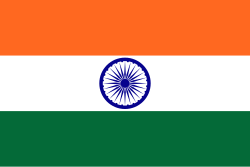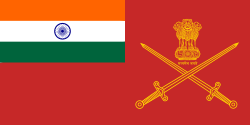This is a list of flags used in India by various organizations.
Contents
- National flag
- Governmental flag
- Supreme Court
- Ensigns
- Naval
- Port authorities
- Military flags
- Indian Armed Forces
- Indian Army
- Indian Navy
- Indian Air Force
- Coast Guard
- Paramilitary forces
- Other agencies
- Former Flags of Indian Armed Forces
- State and union territory flags
- Former official state flags
- Proposed state flags
- Banners of the states and union territories
- Historical flags
- Dominion of India
- Political flags
- National parties
- House Flags
- Sports
- Educational Institutions
- Sainik Schools
- Central Universities
- See also
- Notes
- References
- External links
































































































































